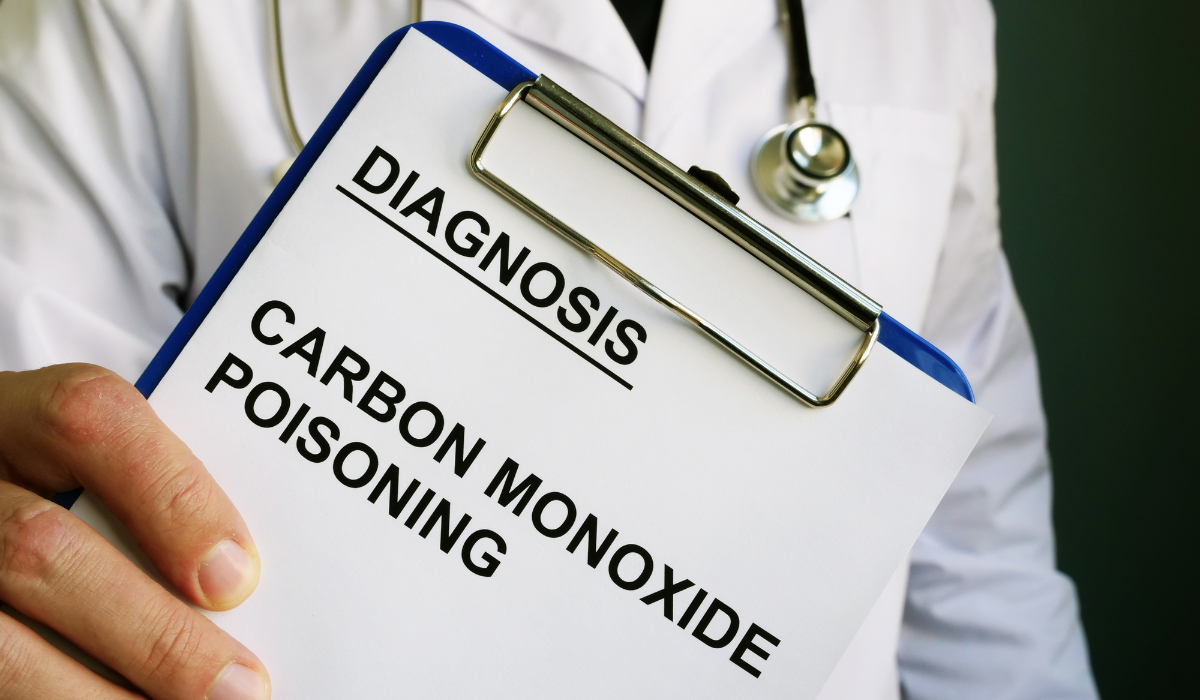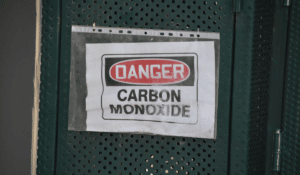Carbon monoxide poisoning is a serious, yet invisible threat facing workers around the country.
Now, an Ann Arbor, Michigan hotel maintenance worker is believed to have succumbed to the toxic gas.
Found dead on the floor of the hotel’s boiler room on November 28, the man has been identified. According to CCTV footage, the deceased was seen going into the boiler room of the hotel the previous day alone around 3 pm and never came out.
From the video, he did not appear to be in distress. Police state there is no reason to believe foul play or death by suicide was involved.
Rather, it’s believed he died from carbon monoxide poisoning.
Testing by fire fighters showed the boiler room contained carbon monoxide levels in excess of 500 parts per million, the maximum testable value by fire crew’s equipment, and well above the OSHA safe threshold of 50 parts per million for an eight-hour work period.
A carbon monoxide detector used by crews from DTE Energy, who later arrived to assist at the scene showed the room had levels of more than 1,000 parts per million.
Officers at the scene further discovered that the ventilation to the boiler room was blocked by a fallen sheet of steel on the roof. Police are waiting on the report from the Washtenaw County medical examiner’s office to officially determine his cause and manner of death.
Let’s take a look at what carbon monoxide is, and the dangers it poses in the workplace.
Related Article: New E-Tool Makes PPE Recommendations For Workplaces
What is Carbon Monoxide?
Carbon monoxide [CO] is an odorless, colorless, and toxic gas, mainly produced by incomplete combustion of carbon-containing substances.
Incomplete combustion occurs when insufficient oxygen is used in the fuel (hydrocarbon) burning process. When that occurs, more carbon monoxide, instead of carbon dioxide is emitted.
Carbon monoxide can be emitted from the following: vehicle exhausts, fuel burning furnaces, coal burning power plants, small gasoline engines, portable gasoline-powered generators, power washers, fire places, charcoal grills, marine engines, forklifts, propane-powered heaters, gas water heaters, kerosene heaters, as well as other sources.
Related: Everything You Need to Know About Manganese Exposure

Effects of Carbon Monoxide Poisoning
Exposure to carbon monoxide affects the blood’s ability to carry oxygen to body tissues and vital organs.
When carbon monoxide is inhaled, it combines with hemoglobin (an iron-protein component of red blood cells), producing carboxyhemoglobin [COHb], which greatly reduces hemoglobin’s oxygen-carrying capacity.
So, what are the symptoms of carbon monoxide poisoning?
Generally, these include headache, nausea, rapid breathing, weakness, exhaustion, dizziness, and confusion. Hypoxia (severe oxygen deficiency) due to acute carbon monoxide poisoning may result in reversible neurological effects, or it may result in long-term (and possibly delayed) irreversible damage to the brain or heart.
And, in some cases, like the unfortunate hotel worker above, carbon monoxide poisoning can even lead to death.
Preventing Carbon Monoxide Poisoning
While you can’t see, smell, or taste the toxic gas, you can help prevent carbon monoxide poisoning through basic controls.
First, limit or ban the use of gasoline-powered devices indoors. These devices, whether pressure washers, generators, or cars, are major producers of the gas.
If these devices must be used, then ensure adequate ventilation systems are provided and functioning.
And, in some cases, you may need to equip your team with special respirators rated for protection against carbon monoxide.
Finally, the use of carbon monoxide detectors & alarms can be a great way to alert employees to any unsafe levels of the gas.
Respiratory Protection for Your Workplace
Respiratory protection in the workplace is of utmost importance, for both you and your team.
Compliance with the OSHA Respiratory Protection Standard could prevent hundreds of deaths and thousands of illnesses annually. Here’s a quick breakdown of OSHA’s guidelines for selecting respirators for use in the workplace:
- Medical evaluations of CSHOs required to use respirators;
- Fit testing procedures for tight-fitting respirators;
- Use of respirators in routine and reasonably foreseeable emergency escape situations;
- Procedures and schedules for cleaning, disinfecting, storing, inspecting, repairing, and otherwise maintaining respirators;
- Procedures to ensure adequate air quality, quantity and flow of breathing air for self-contained breathing apparatus (SCBA);
- Training employees in the respiratory hazards to which they are potentially exposed;
- Training employees in the proper use of respirators, including putting on and removing them, any limitations on their use, and maintenance procedures; and
- Procedures for regularly evaluating the effectiveness of the program.
Carbon monoxide poisoning can happen to anyone, with little warning. But, with proper precautions, training, and protective equipment, you can certainly reduce the likelihood & risks.
*** About Worksite Medical
In most cases, OSHA requires medical surveillance testing, and at no cost to employees. Worksite Medical makes that program easier with mobile medical testing. We conduct on-site respirator fit tests, as well as audiometric exams, pulmonary function tests and heavy metal lab work, right on your job site. We also keep accurate, easy-to-access medical records for your convenience.
You’ll keep your employees at work, and stay ahead of OSHA inspections.




